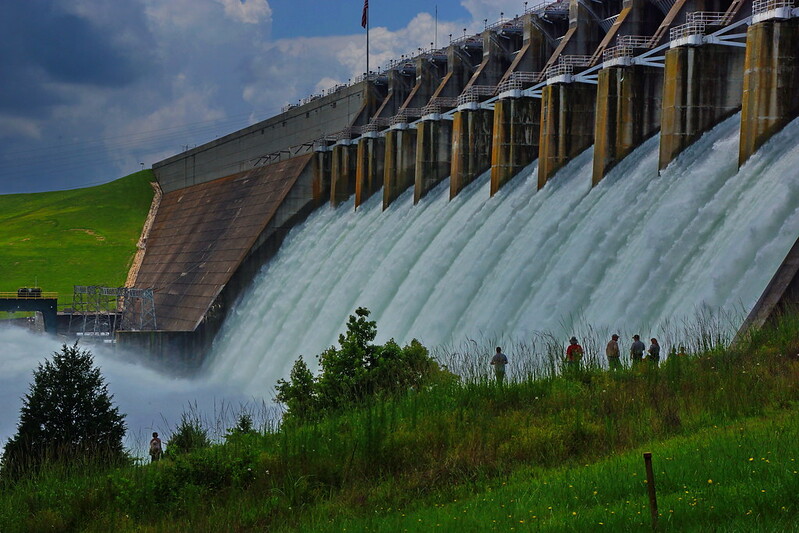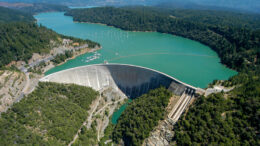The Environmental Protection Agency recently earned applause from environmental groups for a move that went largely unnoticed.
For the first time, the U.S. government in 2022 included methane emissions from dams and reservoirs in its annual report of human-caused greenhouse gas emissions to the Inventory of Greenhouse Gases and Sinks required by the United Nations Framework Convention on Climate Change.
“It’s a big deal that they’re now reporting this,” says Gary Wockner, executive director of the river advocacy group Save the Colorado.
While we’ve long known that coal and gas-fired power plants emit troubling amounts of greenhouse gases, research has found that reservoirs can emit significant amounts of methane, too — which has a global warming potential 85 times that of carbon dioxide over 20 years — along with smaller amounts of nitrous oxide and CO2.
Emissions from some reservoirs can even rival that of fossil fuel power plants. Yet, until now, there’s been no real accounting at the national or international level for these emissions, which fall under the category of “flooded lands.”
“To our knowledge, the U.S. is the first country to include estimates of methane emissions from flooded lands in their greenhouse gas inventory,” the EPA press office told The Revelator.
That may be in part because calculating reservoir emissions isn’t a simple task, as The Revelator reported last year:
Tracking emissions from reservoirs is complicated and highly variable. Emissions can change at different times of the year or even day. They’re influenced by how the dam is managed, including fluctuations in the water level, as well as a host of environmental factors like water quality, depth, sediment, surface wind speed and temperature.
“We’re happy the EPA’s doing it,” says Wockner. “And we’re looking for the next step, which is refinement in the modeling.”

EPA researchers are working to improve how they calculate those emissions, and they’re also conducting a four-year study of CO2 and methane emissions from 108 randomly selected U.S. reservoirs. This aims to “inform a greater understanding of the amount of greenhouse gases emitted from U.S. reservoirs, and the environmental factors that determine the rate of greenhouse gas emissions from reservoirs,” according to the agency’s website.
Wockner applauded the EPA for those important actions but has urged the agency to go even further.
Last year his nonprofit, along with more than 100 other organizations, petitioned the EPA to begin a rulemaking to include dams and reservoirs under the United States’ Greenhouse Gas Reporting Program, which currently requires 8,000 facilities, including coal- and gas-burning power plants, to declare their greenhouse gas emissions. Hydroelectric plants and other reservoirs aren’t currently included in that list.
There are a few reasons why they should report their emissions, the petitioners explain. Hydropower is largely regarded as a clean, emissions-free energy source — although research suggests otherwise.
“As a result, the federal government, states and utilities frequently make decisions regarding climate policies and advancing toward a cleaner electric sector based on incomplete information and mistaken assumptions regarding dams and reservoirs’ greenhouse gas emissions,” the petition states.
If operators of hydroelectric dams are required to regularly report emissions, that would help agencies, nonprofits and the public better assess whether current dams should be relicensed or decommissioned — and whether new projects should be built.
The result, the petitioners say, would be “better-informed climate policies and better-informed permitting decisions.” A win-win.
The United States continuing to report dam emissions to the United Nations, and at home, would also send an important international signal.
“The U.S. helps set climate policy across the planet and helps fund various development projects through the World Bank, the International Monetary Fund, United States Agency for International Development, and others,” says Wockner. “Accounting and reporting the greenhouse gas emissions from dams is a critical step forward in climate policy.”
Previously in The Revelator:
Dam Accounting: Taking Stock of Methane Emissions From Reservoirs
![]()


